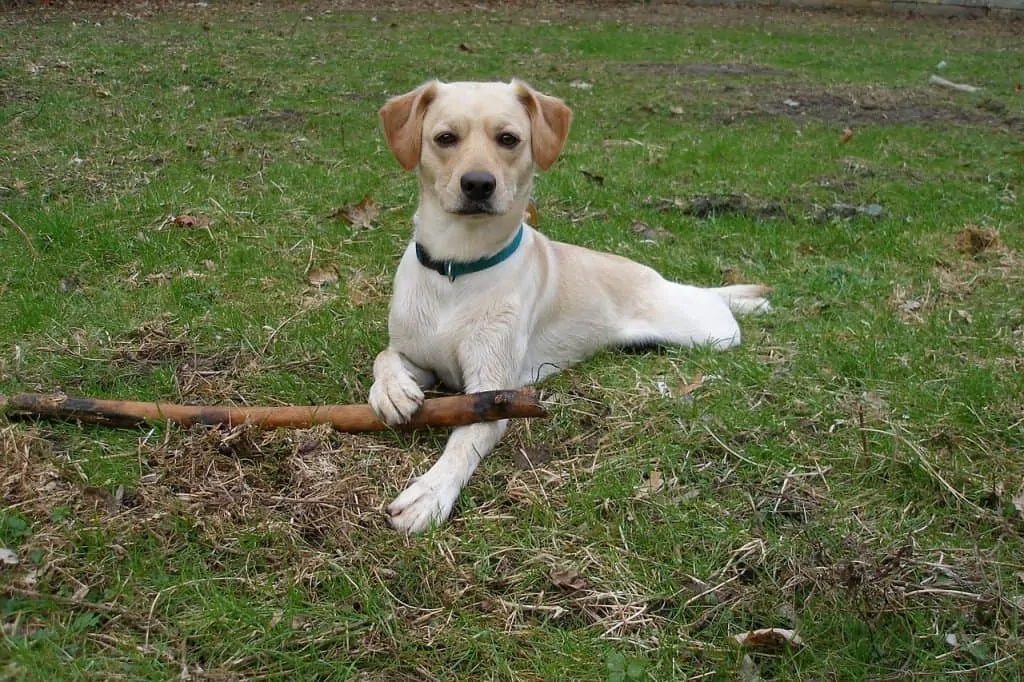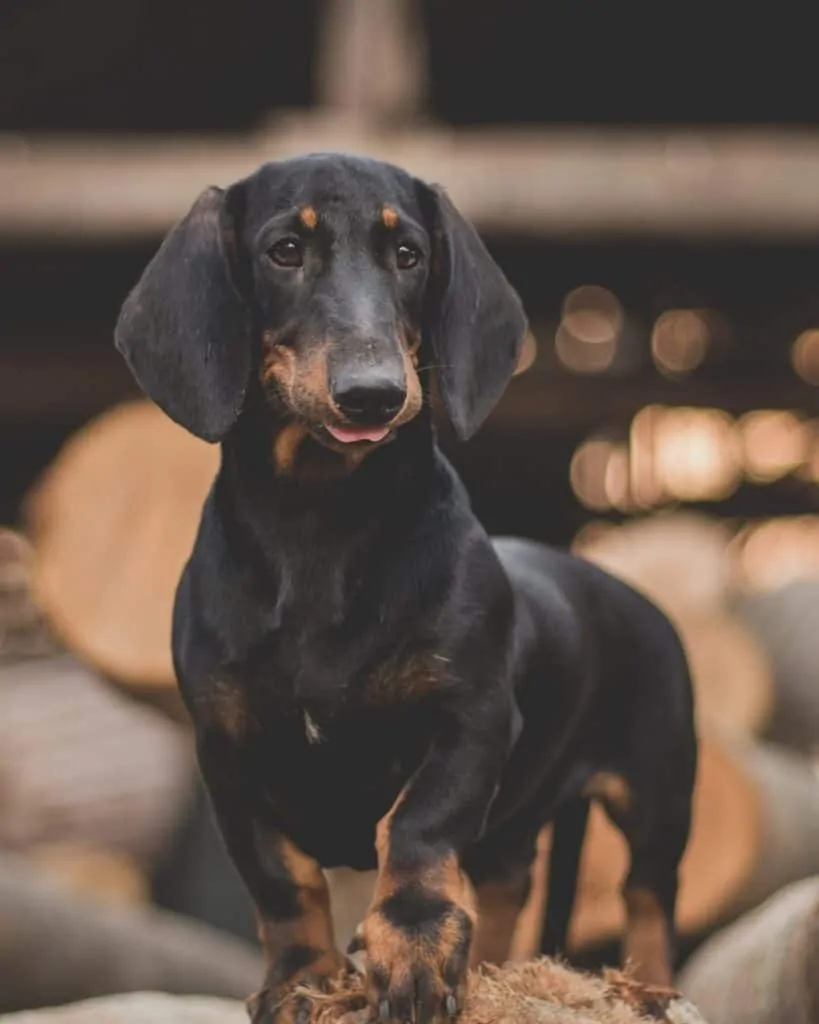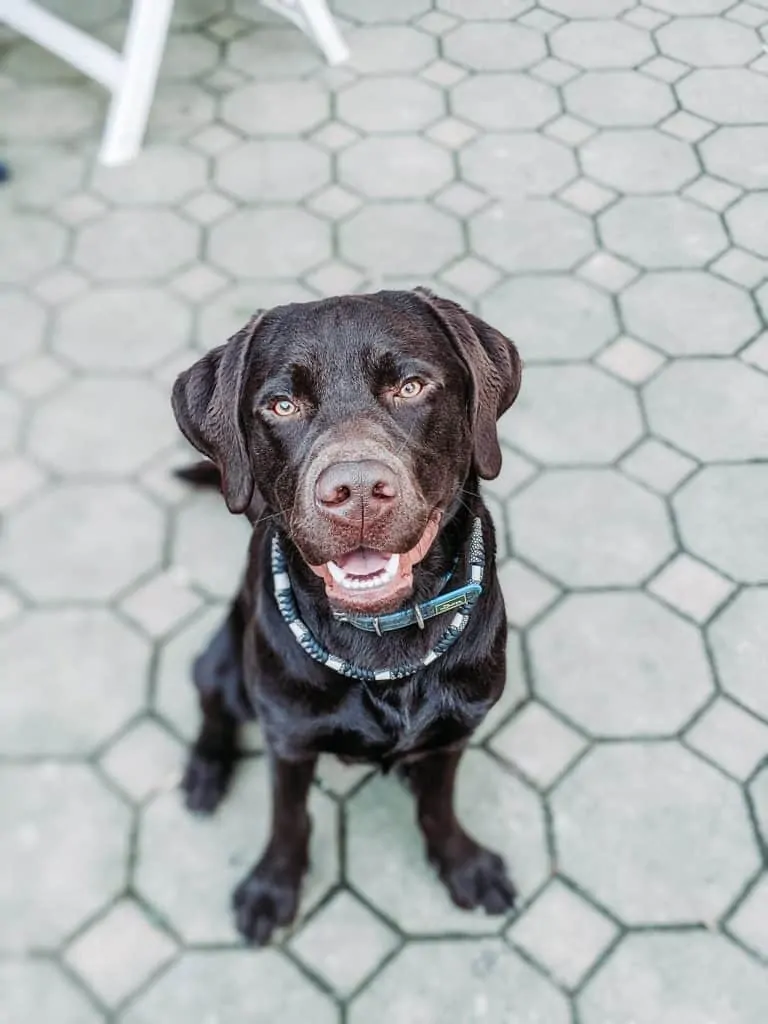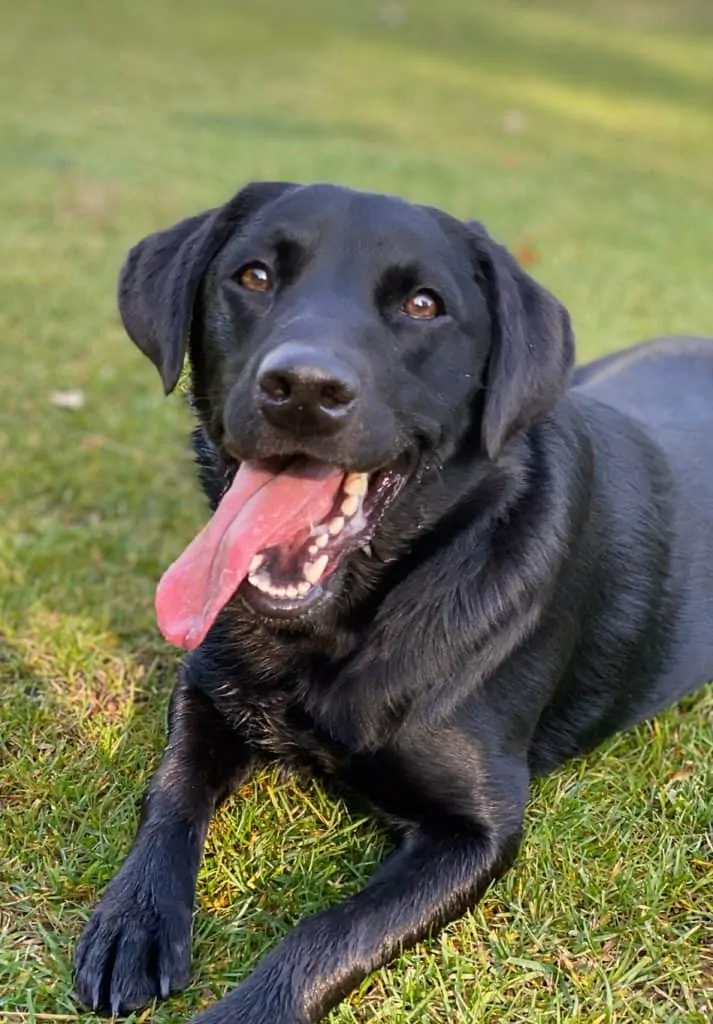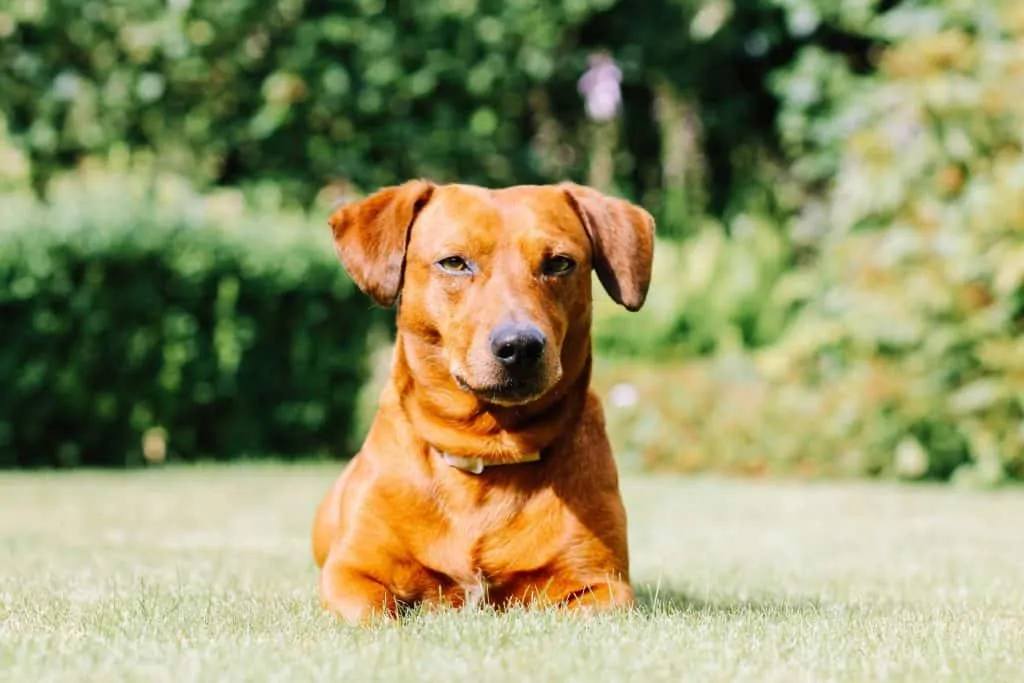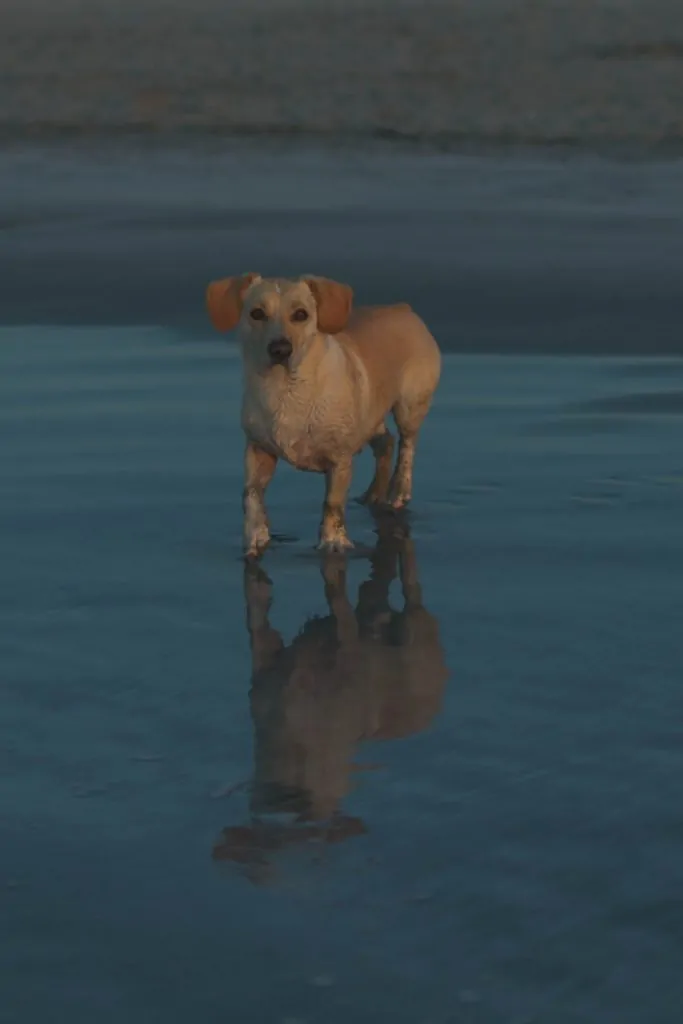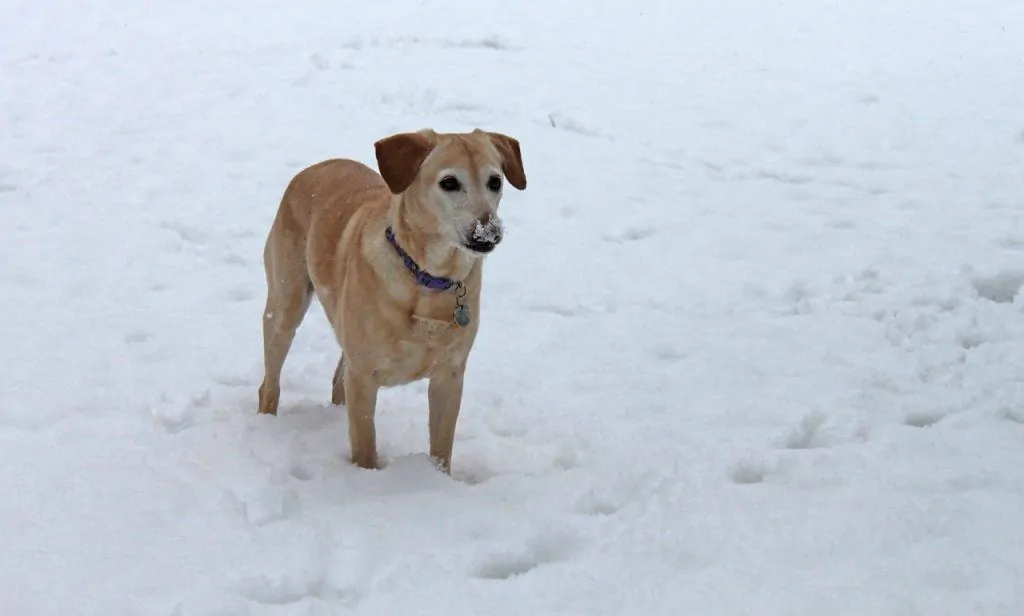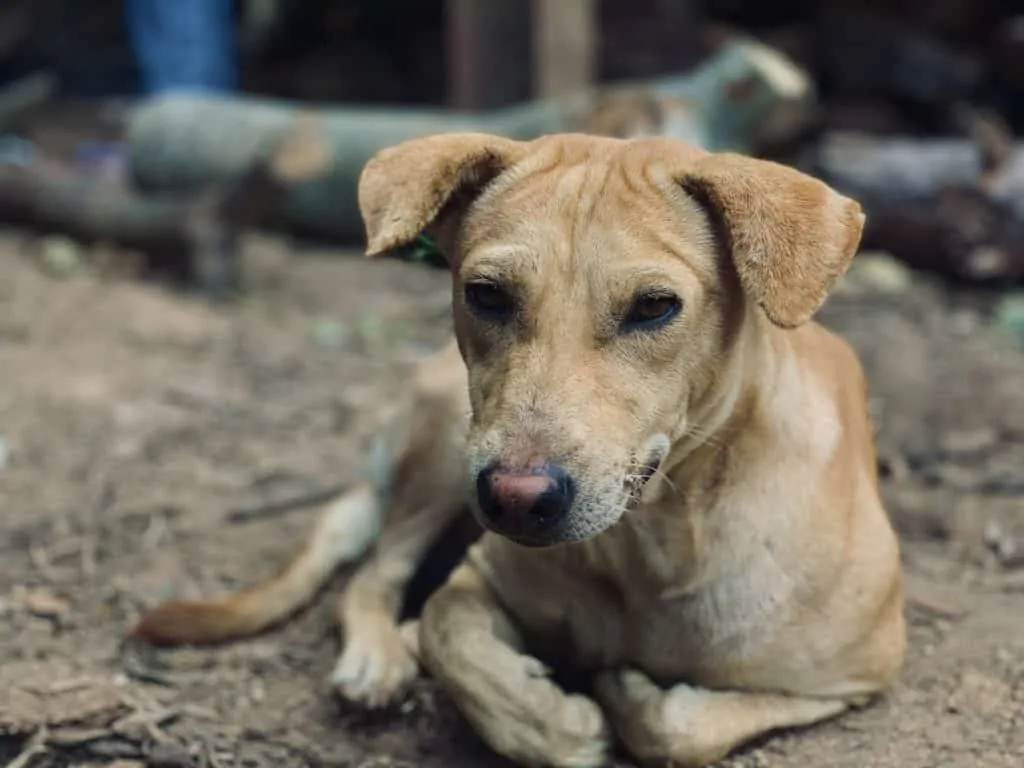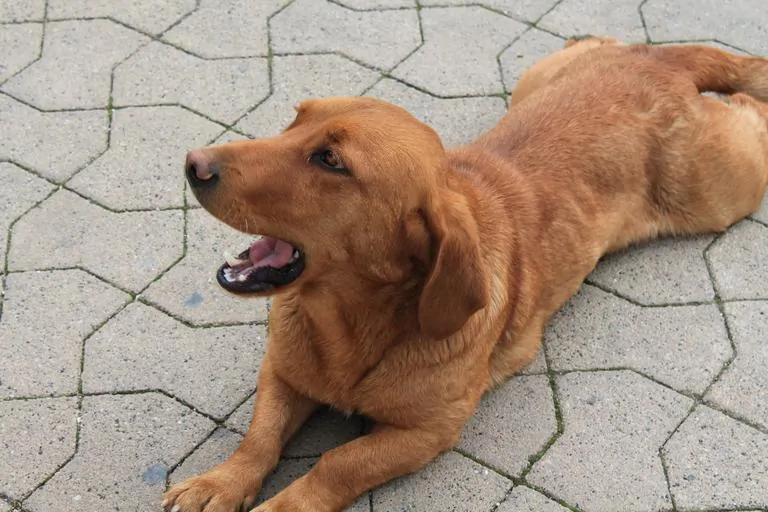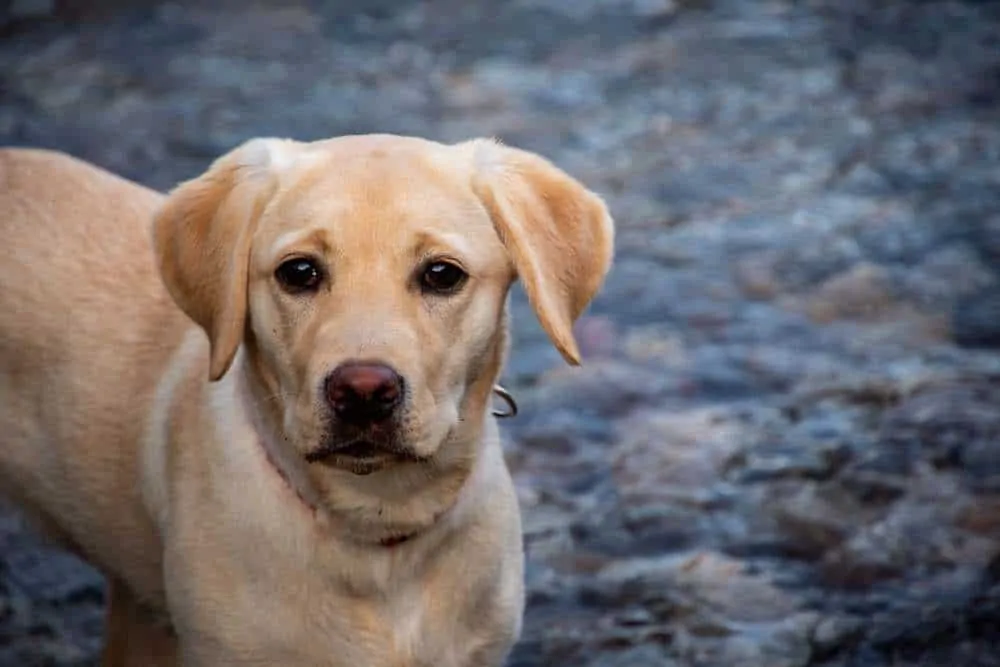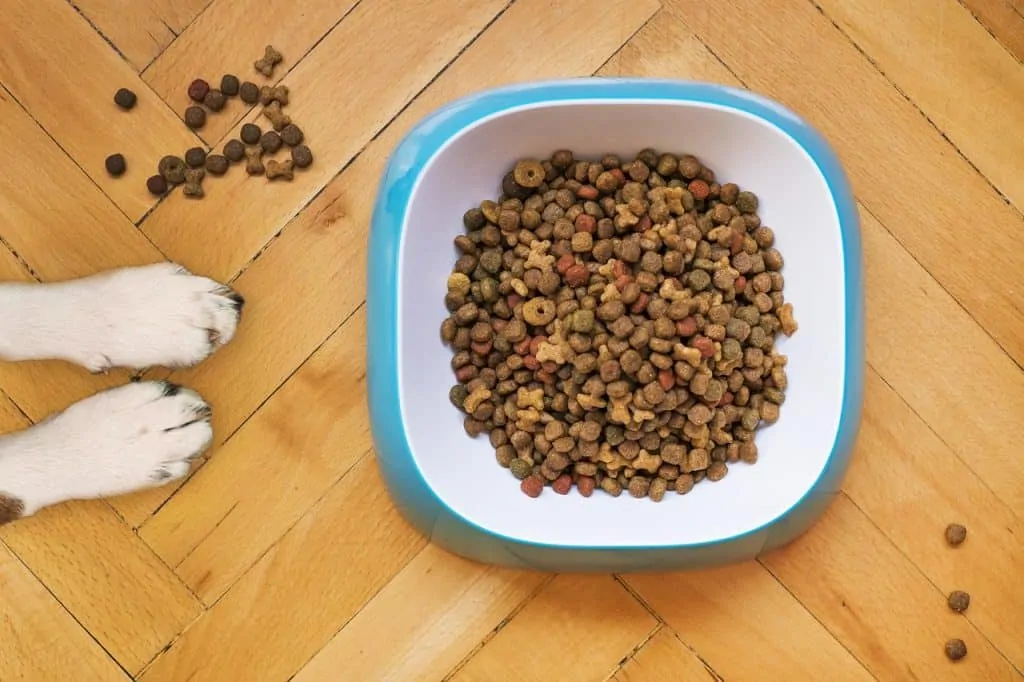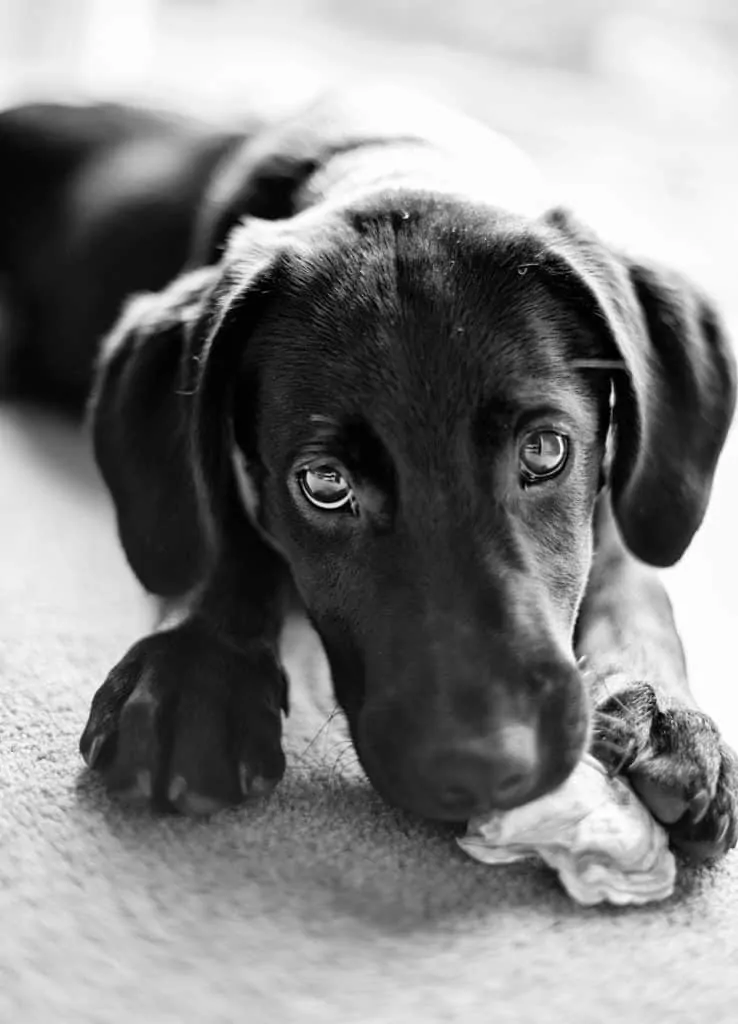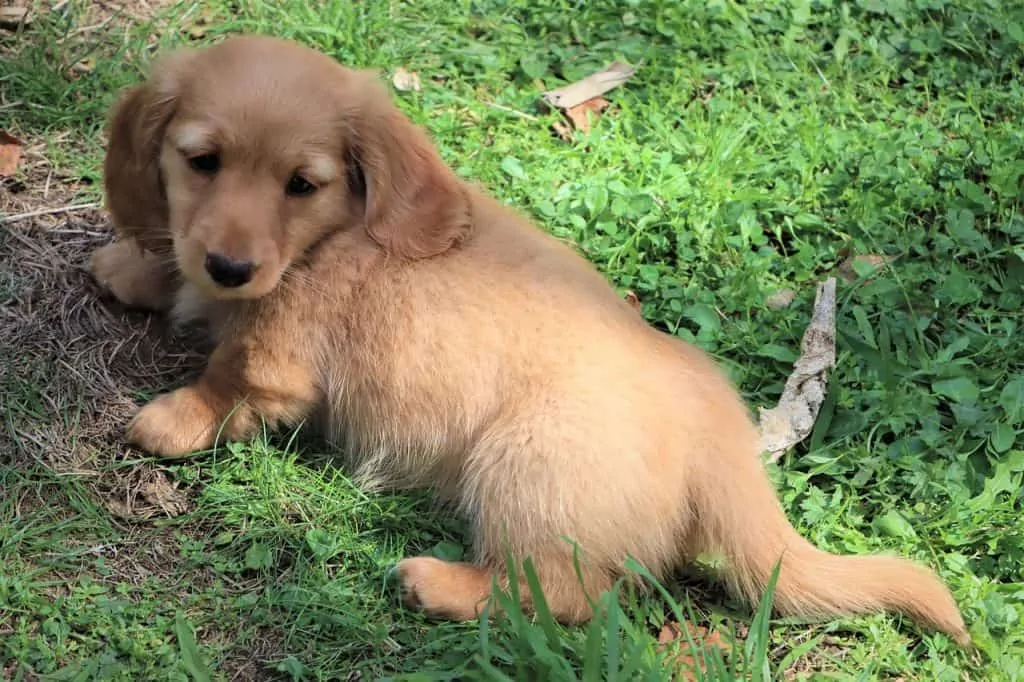If you’re in the market for a unique and head-turning dog, look no further than the Dachsador. This is a crossbreed Dachshund Lab Mix like no other, and while not many people are familiar with this adorable hybrid dog, he is certainly worth learning about.
Of course, that doesn’t mean that the Dachsador is the right dog for every person or family. Are you wondering if the Dachsador would make a good addition to your home? If so, you’ve come to the right place.
Here are 15 things you should know before getting a Dachsador.
Contents
1. The Dachsador Is A Hybrid Dog, Which Is Somewhat Controversial
Dachsador dogs, like many other hybrids, can be somewhat controversial.
Take one look at the Dachsador and it’s kind of clear he isn’t a purebred dog. Also known as a hybrid, a mixed breed, or a designer dog, the Dachsador is the offspring of two specifically chosen purebred parent breeds.
While crossbreeding dogs like the Dachsador has been ongoing for centuries, there is still quite a bit of controversy surrounding the buying and selling of first and second generation mixed dogs.
To understand why, you must first understand a bit of the background of crossbreeding. For the most part, all purebred dogs we know and love today are the result of geneartations of crossbreeding and perfecting.
Because most dogs were bred for working purposes, breeders focused on perfecting certain types of dogs with specific characteristics. This often required them to mix a number of different breeds to create the perfect dog for a specific job.
However, it takes years of crossbreeding and perfecting before a dog can be considered a purebred, and this is where some of the controversy comes in. You see, one of the benefits of buying and selling purebred dogs is that most of their traits are predictable.
However, a first and second generation crossbreed dog is much less predictable when it comes to appearance, health and even temperament.
Furthermore, many modern-day crossbreed dogs are being sold for top dollar, often seen as “designer breeds”, when naysayers point out they are really just fancy mutts.
The truth is, there is a difference between a crossbreed and a mutt. For example, crossbreeds are the specifically chosen offspring of two purposely bred parents, while a mutt is a combination of a number of different dogs.
Some supporters of crossbreeding also suggest that crossbreed dogs are likely to be healthier than their purebred counterparts due to their wider genepool.
Regardless of where you stand on the issue, crossbreeding and the buying and selling of first and second generation crossbreeds is becoming increasingly popular, and so is the particular crossbreed we’re here to learn more about – the Dachsador.
Keep reading!
2. The Dachsador Dog Is A Mix Between the Dachshund and the Labrador Retriever
Some crossbreeds can be difficult to read, and it can be tough to determine which two breeds their parent dogs are. However, this is not always the case with the Dachsador. For one reason or another, the Dachsador is one of those rare crossbreeds who tends to look quite obviously like the perfect mix of his parent breeds.
That’s right – he is a cross between the Dachshund and the Labrador Retriever!
In order to understand more about the Dachsador, it’s a good idea to look into the background of his parent breeds. Let’s begin with the Dachshund.
The Dachshund
Dachshunds are famous for their long bodies and short legs.
Dachshunds are small, feisty dogs originally bred in Germany as avid hunting hounds. Despite their puny size, they are fierce and fearless, bred to hunt formidable prey like aggressive badgers. In fact, the word Dachshund actually translates in German to “badger dog”.
His long body, pointed muzzle and short legs made the Dachshund the perfect advisory to go up against badgers, especially when it came to digging into their burrows.
And though they were originally bred for such dangerous work, Dachshunds won the world over with their sweet temperament and endearing appearance. Today, they come in three coat varieties and two size varieties, and are beloved for their friendly, spirited personalities.
Height: 5 – 6 inches ( Miniature), 8 – 9 Inches (Standard)
Weight: No more than 11 Pounds (Miniature), 16 – 32 Pounds (Standard)
Coat: long and wavy, wire-coated, or short and smooth
Hypoallergenic: No
Life Span: 12 – 16 years
Personality: Friendly, clever, outgoing, quirky
The Labrador Retriever
The Lab comes in three color variations, including black, yellow, and chocolate, which is seen above.
The Labrador Retriever currently sits at number 1 out of 196 on the American Kennel Club’s list of America’s most popular dog breeds, and for good reason. This family oriented dog is a famous water retrieving dog hailing from Newfoundland, Canada. His thick, double-coat helped protect him during his water dog days. He also has famously webbed paws and a unique “otter tail” that helped him to swim.
But it wasn’t the Lab’s work ethic that made him so popular. This dog is a family-friendly gem. He is eager to please, easy to train, and gets along well with most everyone he meets. The Labrador Retriever also comes in three coat colors including chocolate, yellow and black.
Height: 21.5 0 24.5 Inches
Weight: 55 – 80 Pounds
Coat: Double coated, dense, water-resistant
Hypoallergenic: No
Life Span: 10 – 12 years
Personality: Intelligent, friendly, outgoing, energetic
3. The Dachsador Is An Intelligent And Outgoing Dog
Dachsador dogs are a combination of two intelligent working dogs.
As you may have gathered after learning a bit more about the Dachsador’s parent breeds, this hybrid is going to be a clever and energetic dog. For this reason, he will do best with owners who can keep up with his temperament and who have time to exercise him and keep him mentally stimulated.
You should also note that intelligent dogs can be more prone to suffering from behavioral issues like stress and anxiety, especially if their physical and mental needs are not met. A Dachsador who is not properly exercised or kept mentally happy can be prone to destructive behaviors as well, including chewing, barking and bathroom accidents.
You can avoid these behavioural issues in your Dachsador by ensuring you keep him properly exercised each and every day, and by committing time to training and socialization at an early age, which we will discuss in more detail further down.
4. The Dachsador Sheds Year-Round, Which Could Be Problematic for Those Who Suffer From Allergies
Dachsador dogs are shedders, and shed year round.
If you suffer from allergies, you should know that the Dachsador is not a hypoallergenic dog. That said, there truly is no such thing as a hypoallergenic dog, though there are some breeds that shed less than others.
The Dachsador, however, is a heavy shedder who sheds most during the shedding season which occurs during spring and fall. His fur is also prone to producing allergy inducing dandar that can be problematic for those who suffer from allergies.
To help reduce shedding, it’s best to ensure you keep up with proper grooming practices. Routine brushing can help collect and reduce excess hair and reduce doggy odor. Keeping your Dachsador on a healthy dog food specified for his age, weight and activity level can also help alleviate shedding, while certain supplements can help increase coat health and keep your furniture more fur-free.
5. Your Dachsador’s Appearance Could Vary Greatly
The Dachsador’s appearance will vary, and he could look like a combination of both of his purebred parents, or he could look more like one than the other.
The Dachshund and the Labrador Retriever are two very different dogs, especially when it comes to body shape and size. For this reason, your Dachsador himself could have a varying appearance, depending on where you get him.
This means that a Dachsador could look more like his Labrador parent or more like his Dachshund parent, or he could look like a combination of both, like the Dachsador pictured above.
That said, while many Dachsador dogs do inherit their Dachshund parent’s shorter stature, not all of them will. Some Dachsador dogs will be just as tall as their Labrador parents, while others can be varying sizes in between.
If you would like to be able to better predict your Dachsador’s appearance, we suggest going through a reputable breeder who is selling second or third generation crossbreeds. A second or third generation crossbreed Dachsador is a crossbreed who is the direct offspring of two other crossbreed Dachsadors.
You also have the option of rescuing an adult Dachsador, whose appearance has already been established.
With that in mind, let’s take a look at some of the common physical characteristics you might encounter when considering a Dachsador dog.
Dachsador Height: 15 – 25 inches
Dachsador Weight: 30 – 60 Pounds
Dachsador Coat Color: Black, chocolate, yellow, black and tan, chocolate and tan, cream, chocolate and cream, brindle,blue and tan, red, and tan.
Dachsador Coat Type: Double-coated, shedding, smooth, wire-coated, or long
Dachsador Eye Color: Brown
6. The Dachsador Is Adaptable To Apartment Living
Dachsador dogs require plenty of exercise, including daily walks and playtime.
Both the purebred Dachshund and the purebred Lab can do well in apartments so long as their individual needs are met each day. This is also true for their offspring, the Dachsador. That said, the Dachsador also comes from two energetic purebred parents who were bred for hunting.
As such, the Dachsador can be somewhat vocal and high energy, which can be problematic for those who live in smaller spaces or those who live with neighbors on the other side of their walls.
That said, there are steps you can take to work with your Dachsador to reduce barking. Training, socialization, and plenty of exercise and mental stimulation can further help keep your Dachsador happy when home in an apartment.
However, keep in mind that the Dachsador also becomes very bonded to his family. He will not do well left alone for too long at a time, and does best with owners who have a flexible schedule and are able to spend plenty of time with their dog.
If left to his own devices for too long and without the proper training, the Dachsador can be prone to destructive behaviors like chewing and bathroom accidents, so busy owners who are renting should keep this in mind.
7. The Dachsador Is Eager to Please and Easy To Train
Dachsadors can be stubborn, but with the right training techniques, they can be a joy to work with.
Dachsador dogs are naturally curious and intelligent, and they will enjoy spending time with you during fun training sessions. However, they can become bored easily and some may even be prone to stubborn behaviors, especially if training goes on for too long or becomes too repetitive.
To help keep your Dachsador engaged during training, try keeping sessions short. Practice five minute sessions several times a day, with plenty of breaks in between and lots of tasty treats and praise.
Refrain from punishing or scolding your Dachsador during training, as this could cause him to shut down and hinder the lesson. Instead, stick with positive reinforcement and use treats that are high currency. This means that you should try using training treats that your Dachsador doesn’t get often and that are very smelly and highly palatable to him.
You might also consider crate training your Dachsador, especially if you live in an apartment or rental home and are worried about destructive behaviors.
When done properly, crate training can also help alleviate anxiety and stress in your Dachsador, and help to keep him safe and comfortable while his family is away.
Along with training, it’s also important to make sure you properly socialize your Dachsador during puppyhood. Properly socializing your dog will help ensure he grows up happy, healthy and well-rounded.
To socialize your dog, make sure you introduce him to as many new experiences as possible, and try and ensure these experiences are positive for him. Refrain from forcing your Dachsador into a situation that is clearly stressful or scary for him, as this can often increase his anxiety and lead to worsened behavioral issues down the road.
8. Like All Dogs, The Dachsador Can Be Prone To Genetic Health Issues
Dachsadors can suffer from health issues inherited by either of their parent breeds.
While there is some debate about whether or not hybrid dogs are healthier than purebreds, the truth is that any dog can be prone to inheriting genetic health issues. For the most part, the Dachsador himself is a robust and healthy crossbreed.
On average, he has a lifespan of around 10 to 15 years. That said, he can be prone to any of the same genetic health issues as his parent breeds.
These issues include:
- Retinal Dysplasia
- Hypothyroidism
- Progressive Retinal Atrophy
- Cataracts
- Hip and Elbow Dysplasia
- Intervertebral Disc Disease
- Obesity
- Patella Luxation
- And Bloat
What You Should Know About Bloat and Your Dachsador
Bloat is a serious and often life threatening condition that comes on suddenly and requires immediate medical attention. Also known as Gastric Dilatation-Volvulus or GDV, Bloat is more common in deep-chested dogs like Labradors.
It occurs when air or gas fills the stomach or intestine, causing it to flip. This flipping in turn cuts off blood flow to the lower part of the body, which can put dogs into shock. While bloat can come on suddenly, it is often caused when a dog eats or drinks too quickly or eats or drinks immediately after intensive play or exercise.
Some of the most common symptoms of bloat include unproductive vomiting, excessive drooling, pacing, obvious pain, distended abdomen, and collapse.
To better combat bloat, keep your Daschador on a quality dog food and consider investing in a slow feeder. It’s also a good idea to monitor your Daschasor and keep him from eating or drinking immediately after exercise or play sessions.
Other Ways To Keep Your Dachsador Healthy
You can help ensure your Dachsador lives his longest, healthiest life by getting him from a reputable source that understands the importance of responsible breeding practices. It’s also important to keep up with routine vet visits and invest in preventative care.
Of course, keeping your Daschador healthy goes beyond staying on top of routine vet visits. It’s also important to ensure your Dachsador gets plenty of daily exercise, eats quality dog food specified for his age, weight and activity level, and that you maintain proper grooming practices.
You might also consider having your Dachsador health screened at an early age. Health screening a dog can allow you to prepare for or work to prevent certain medical issues that he may be prone to, thus saving you money and heartache in the long run.
9. The Dachsador Is Great For Novice Dog Owners With A Flexible Schedule
Dachsador dogs become very attached to their owners and will do best with those who have a flexible schedule.
If you’re new to dog ownership, the Dachsador would be a great addition to your household. He is just active enough to be a great fit for outgoing dog owners, and playful enough that he will get along with just about everyone.
The Dachsador also makes a great hiking partner, and he will enjoy outings and adventures. He gets along well with other pets and children, and is a wonderful family companion.
However, this is not the ideal dog for those with busy schedules. Remember, Dachsador dogs become very bonded with their people and they do require a certain amount of training, exercise and mental stimulation each and every day.
They will do best in homes with active families that have time to commit to them and with owners who are willing and able to invest in training, play and exercise.
10. Dachsador Dogs Can Be Prone To Digging
Socialisation should begin early with your Dachsador puppy and carry on throughout his life.
If your Dachsador inherits his Dachshund parent breed’s disposition, he may be prone to digging and burrowing. Remember, the Dachshund is a bred badger hunting dog, and part of his talents included relentless digging into badger dens.
However, the Lab is also a natural digger, and he does so for fun or sometimes out of boredom.
You can work with your Dachsador to teach him when not to dig, and owners should be vigilant about this behavior as it can lead to destruction inside and outside of the house. Furniture and gardens may not be safe around your Dachsador unless you work with him.
Luckily, there are toys and training techniques you can use to help redirect your Dachsador’s natural instinct to dig by buying him special toys or providing him with a specific place in the lawn or garden that is his to play in. The Dachsador may also appreciate a sandbox, which is something to consider.
11. The Dachsador Does Best On A Quality Dog Food Specified For His Age, Weight and Activity Level
Making sure your Dachsador eats a high quality dog food will help reduce chances of serious health issues.
As we mentioned above, the Dachsador can be prone to a serious gastrointestinal issue known as Bloat. This makes it especially important that he maintains a healthy diet throughout his life.
Like all dogs, the Dachsador will do best on dog food that is rich in real animal protein, fatty acids, carbohydrates, vitamins, minerals and water. Stay away from dog foods that contain byproducts or additives like corn, soy or wheat.
These days, you have plenty of options when it comes to which type of dog food you want to feed your furry friend, including dry dog food, wet dog food, raw dog food or homemade dog food.
All these dog foods have their pros and cons, so it’s important you do your research and speak with your veterinarian to decide which type of dog food would be best for your unique Dachsador.
12. The Dachsador Is An Athletic Working Dog Who Needs Plenty Of Exercise and Mental Stimulation
Dachsador dogs will need plenty of outdoor playtime and walks to ensure they are happy and healthy.
All dogs require routine exercise and mental stimulation, and the Dachsador is no exception. In fact, this hybrid dog is especially prone to behavioral issues if left to his own devices, and he may even become depressed and anxious if his physical and mental needs are neglected.
The best exercise for a Dachsador dog will include a good walk once a day and plenty of play time in the backyard or at a dog park. He will also enjoy playing fetch or frisbee.
Along with routine exercise, your Dachsador should also be mentally stimulated. You can keep his clever mind active by teaching him new tricks and cues and even offering him jobs to do around the house.
Some Dachsadors have been able to learn how to help bring in the groceries or sort the laundry, while others load the dishwasher.
You can also invest in special toys designed to enrich your Dachsador and keep him happy while you are away. Puzzle toys are especially effective for intelligent and active dogs like the Dachsador.
13. Dachsador Dogs Can Make Wonderful Additions families
When properly trained and socialized, Dachsador dogs get along well with most everyone.
Because Dachsadors are a mix of two friendly, outgoing, and family-oriented breeds, it’s no surprise that they will do well in households with children and other pets. When properly socialized and trained, the Dachsador makes a wonderful dog for outgoing households and will do well on doggy play dates and dog park days, and should get along well with company.
That said, it’s also important to make sure you teach children how to respectfully interact with the family dog to ensure everyone is getting along safely and happily. It’s also important to supervise very young children around your Dachsador until they are old enough to understand how to be gentle.
14. Your Dachsador’s Grooming Needs Are Generally Moderate
Dachsadors are moderate shedders who shed year-round.
While the Dachsador does shed, his grooming needs are going to be relatively mild. He will do best with routine brushing a few times a week to get rid of loose hair and reduce doggy odor, and bathing will only need to be done once every few weeks or so.
Along with brushing and bathing, it’s important to keep on top of your Dachsador’s ear health. He can be prone to ear infections so his ears should be checked and cleaned regularly to keep them free of waxy buildup and debris.
It’s also important to trim your Dachsador’s nails often to keep them from cracking and splitting and to brush your Dachsador’s teeth once a day using a dog safe toothpaste and toothbrush.
15. Dachsador Puppies Are More Affordable Than Many Other Mix Breeds
It’s important to go through reputable sources when looking for a Dachsador puppy or rescue.
Because they are not as well known as some other hybrid dogs, Dachsador puppies are still relatively affordable. Prices range from $200 to $500 when going through a reputable breeder, though this price can vary depending on the breeder you choose and the quality of your Dachsador puppy’s parent breeds.
It’s very important to do plenty of research when looking for a Dachsador puppy and to go through reputable sources who understand the importance of responsible breeding. Steer clear of backyard breeders or uncertified online sellers who are offering Dachsador puppies at a bargain price. You are much more likely to wind up with a sick puppy down the road, which can cost you more money in the long run.
Instead, stick with reputable breeders or trusted shelters when looking for your Dachsador. Reputable breeders should be able to provide you with a certificate proving their dogs have been health screened and are cleared of any serious health issues.
A good shelter will often offer you a free initial vet exam, and many shelters even have their dogs undergo behavioral testing to ensure they are ready for adoption.
Whichever route you take to get your Dachsador puppy, be patient and don’t be afraid to ask plenty of questions.
Trust us, it will be well worth it in the long run.
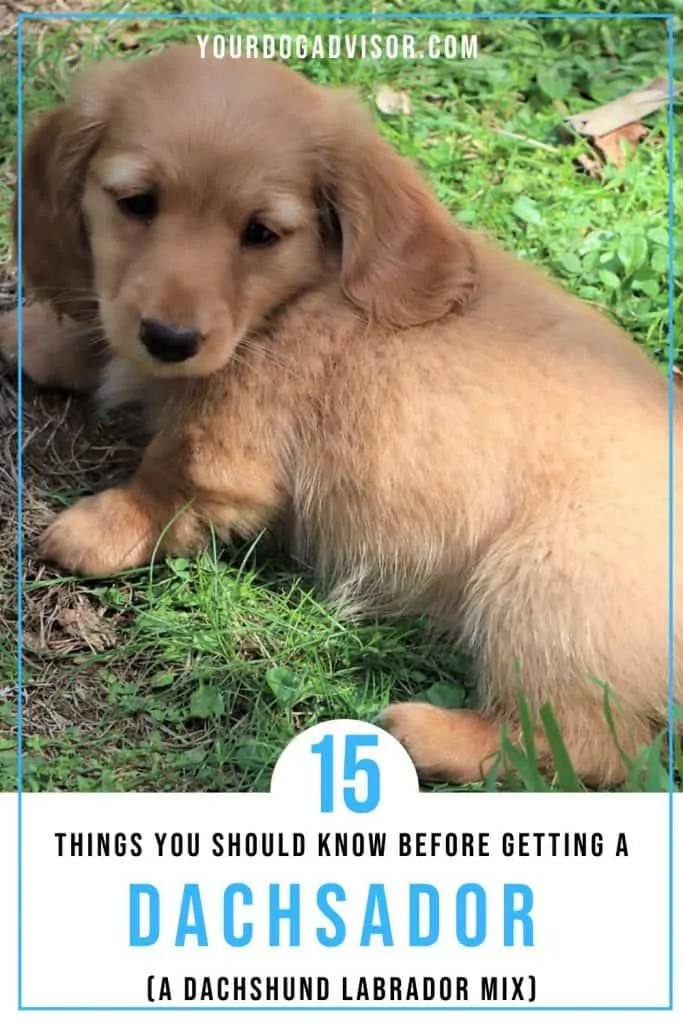

Jen Jones is a professional dog trainer and behavior specialist with more than 25 years of experience. As the founder of ‘Your Dog Advisor’ and the ‘Canine Connection’ rehabilitation center, she applies a holistic, empathetic approach, aiming to address root causes rather than merely treating symptoms.
Well known for her intuitive and compassionate approach, Jen adopts scientifically-proven, reward-based methods, encouraging positive reinforcement over punishment. Jen specializes in obedience training, behavior modification, and puppy socialization. Her innovative methods, particularly in addressing anxiety and aggression issues, have been widely recognized. Jen has worked with many of the world’s leading dog behaviorists and in her free time volunteers with local animal shelters and rescue groups.
